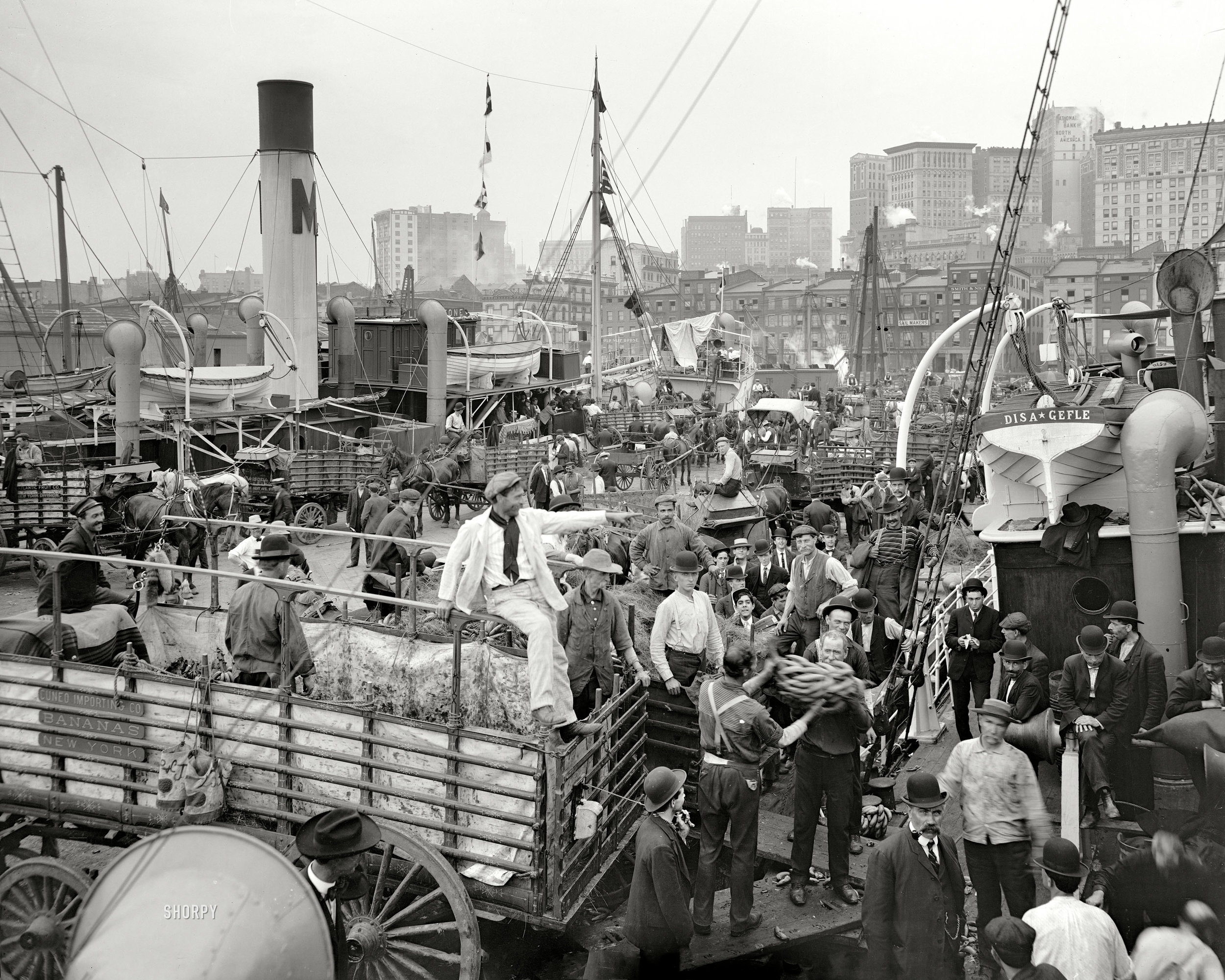
Statue of Liberty; ca 1883.
Workers in France hammering copper during construction of the Statue of Liberty, 1883. The Statue was dedicated three years later in 1886.

Emily Warren Roebling
Portrait of Emily Roebling, wife of Brooklyn Bridge chief engineer Washington Roebling, who was bedridden with Caisson's disease early on. Everyday Emily would walk his plans from their home in Brooklyn and give and explain them to the foremen on site. So respected was she by all that in 1883 she became the first person to walk across the completed bridge. Washington's father Augustus Roebling was the bridge's designer. The portrait is by French painter Carolus-Durand; ca 1896.

Wallabout Bay
A map showing Wallabout Bay, current site of the Brooklyn Navy Yard. During the Revolutionary War, the Bay—located off the East River in Brooklyn—was site of the infamous British prison ships, aboard which more Americans died than in all the war's battles.


Statue of Liberty; ca 1905.
Designed by sculptor Frédéric Auguste Bartholdi, the Statue was one of the earliest examples of "curtain wall" construction, where the exterior is not load-bearing but instead affixed to an internal frame. This allowed the statue's skin to "breathe," expanding and contracting with changing temperatures, thus preventing the copper skin plates from cracking or breaking.

The Statue of Liberty at sunset.


The Statue of Liberty; ca. 1905.
Picture taken a year after the death (at 70) of designer Frédéric Auguste Bartholdi. The engineer on the project was young Gustave Eiffel. The Statue was one of the first examples of curtain wall construction, where the exterior is not load bearing but instead attached to an internal frame. This innovation allowed the skin of the Statue to "breathe," or expand and contract with the changing temperature.


The Brooklyn Bridge
The Brooklyn Bridge, East tower as seen from East River.

Banana Docks; ca 1906.
Unloading a ship on the East River's Banana docks. Great portrait of various waterfront characters. The Banana docks as local mariners still call them are now officially Piers 35 & 36 and run by the city's Economic Development Corporation. The latter houses a sanitation facility.










